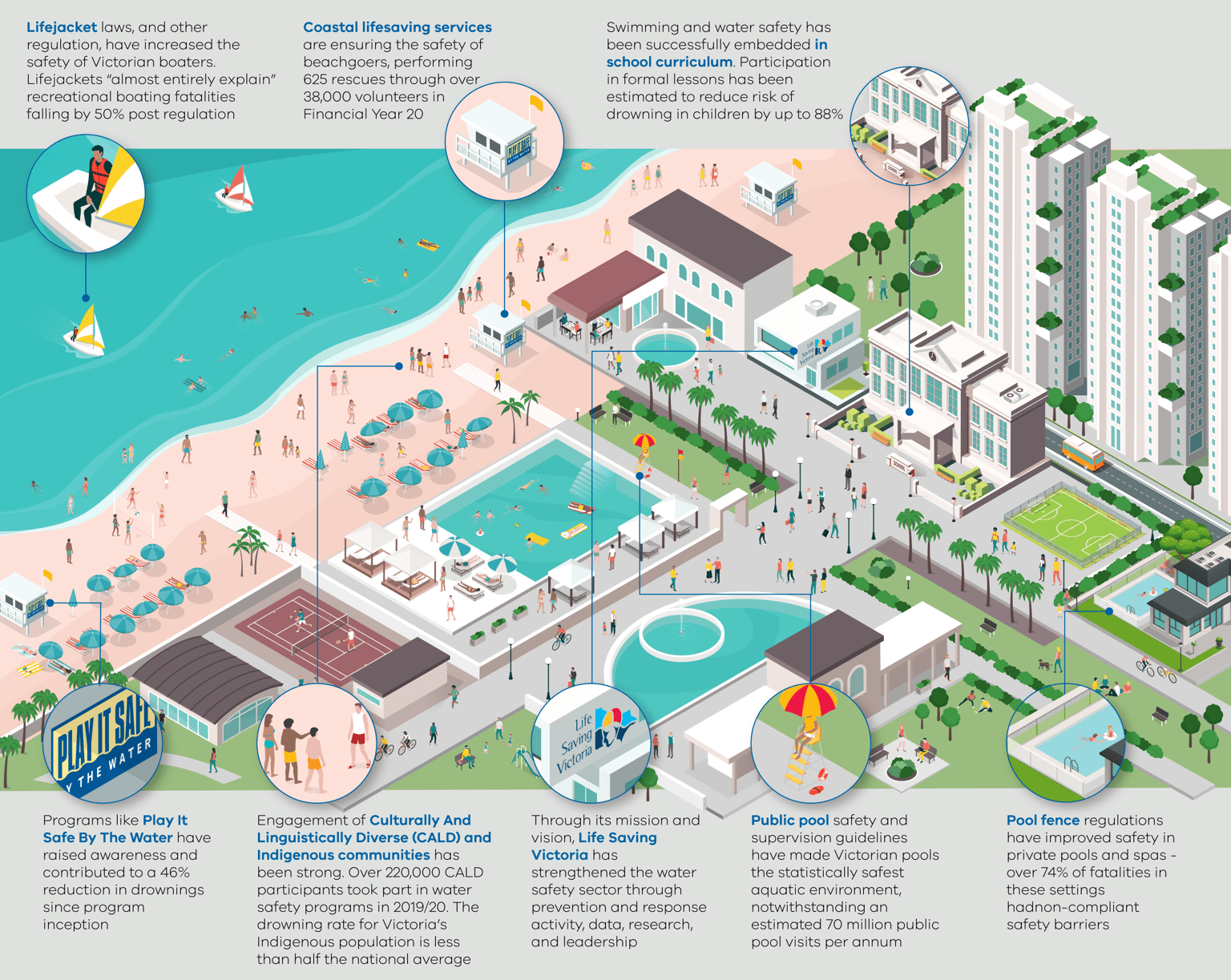Victoria has successfully delivered a range of water safety initiatives
Victoria has long recognised both the benefits of water, and the risks water can pose to Victorians. Over many years Victoria has implemented a wide range of programs and initiatives which have successfully improved water safety (see Figure 1).
The rate of fatal drowning has plateaued over the past decade
Victoria successfully halved the rate of drowning over the period 1997 to 2010. However, this success has not been sustained. Over the last ten years, the rate of drowning has remained relatively consistent at approximately 0.7 deaths per 100,000 population.
Recent and concerning drowning statistics require a response
Last year, the number of drowning fatalities grew to 53 per cent above the ten‑year average (see Figure 4), representing a 40 per cent increase in the drowning rate (per 100,000 population). Other states and territories did not experience as severe spikes as Victoria in 2020/21. Additional Victorian fatalities comprised 60 per cent of additional fatalities in Australia in 2020/21, compared to the previous financial year.
The Victorian spike was not the result of a significant increase in fatalities in a particular setting, or in those participating in a particular activity. Nevertheless, major contributors to the spike include more deaths in open waterways (both inland and coastal), as well as a greater number of children drowning in the home, in private pools and baths. Meanwhile, the number of non‑fatal drowning incidents has not fallen, and shows signs of trending upward.
Updated
